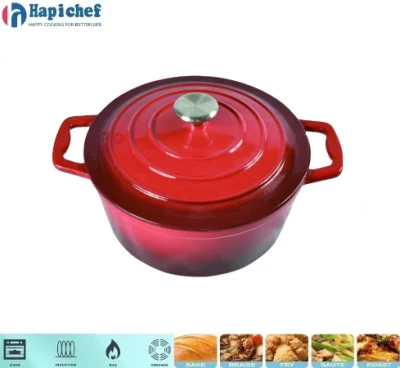prepping cast iron skillet manufacturer
The Art of Prepping Your Cast Iron Skillet A Guide from Manufacturers
Cooking enthusiasts and professional chefs alike often turn to cast iron skillets for their exceptional heat retention and versatility. However, to make the most of this timeless kitchen staple, proper prep work is essential. This article delves into the recommendations put forth by cast iron skillet manufacturers to ensure that your skillet remains in optimal condition and continues to improve with each use.
Understanding Prepping
Prepping a cast iron skillet means more than just cleaning; it involves seasoning, maintenance, and care. Seasoning builds a natural non-stick surface through the application of oil, which is baked into the iron. This process also helps to prevent rust and enhance the skillet's cooking performance.
The Importance of Seasoning
Most cast iron skillet manufacturers suggest seasoning your pan before its first use. New skillets may come pre-seasoned, but adding an extra layer will enhance the skillet's performance. To season your skillet, begin by washing it thoroughly with warm, soapy water to remove any factory residues. Rinse it well, then dry it completely with a clean cloth or by heating it on the stove.
Next, apply a thin layer of vegetable oil or melted shortening all over the skillet, inside and out. It’s crucial to use a high smoke point oil such as flaxseed oil, canola oil, or grapeseed oil for optimal results. Avoid using butter or olive oil, as they could create a sticky residue. Once the oil is applied, place the skillet upside down in a preheated oven (around 375°F or 190°C) for about an hour. This process allows the oil to bond with the iron, resulting in a durable, non-stick layer.
Regular Maintenance
prepping cast iron skillet manufacturer

To keep your cast iron skillet in prime condition, regular maintenance is key. After each use, it’s advisable to clean the skillet with hot water and a stiff brush, avoiding soap whenever possible. If food is stuck, sprinkle some coarse salt and scrub gently. This practice prevents the deterioration of the seasoning layer.
Dry the skillet immediately after cleaning to prevent rust. You can place it on a low heat to ensure any moisture evaporates completely. Once dry, apply a light coat of oil to maintain the seasoning and prevent oxidation. Manufacturers recommend repeating this maintenance routine regularly, especially if the skillet is used frequently.
Addressing Rust and Sticking Issues
If rust or sticking occurs, don’t fret! Manufacturers provide guidance on how to restore your skillet. For minor rust, scrub it with steel wool to remove the rust entirely. Then, wash, dry, and re-season the skillet as mentioned above.
In cases of excessive sticking, increasing the frequency of seasoning can help. Some manufacturers recommend a more profound seasoning by applying more oil and repeating the oven process a couple of times until the non-stick surface improves.
Conclusion
In summary, prepping a cast iron skillet is a mix of initial seasoning and ongoing maintenance. By following the guidelines and recommendations from skillet manufacturers, you can ensure that your cast iron skillet remains an enduring kitchen companion, ready to create delicious meals for years to come. Embrace the process of preparation, and enjoy the benefits of this unique cooking tool, transforming your culinary experiences into something truly remarkable. Happy cooking!
-
Why Every Kitchen Needs a Casserole Cast Iron DishNewsJun.24,2025
-
Experience the Tradition and Quality of Cast Iron CookwareNewsJun.24,2025
-
Double Sided Cast Iron Grill PanNewsJun.24,2025
-
Cast Iron Dutch Ovens You’ll Actually UseNewsJun.24,2025
-
Buy Cast Iron Griddle for Everyday CookingNewsJun.24,2025
-
Barbecue Iron Grill Cooking PowerNewsJun.24,2025
-
Standard Product Lines from Cast Iron Cookware SuppliersNewsJun.11,2025
